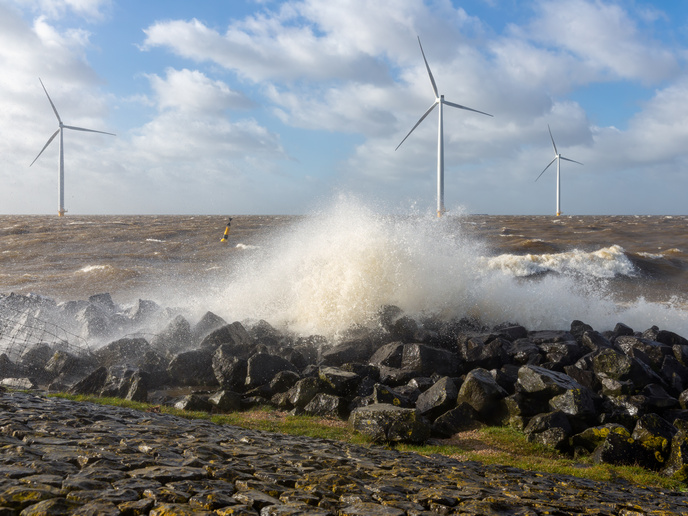Why don’t offshore wind turbines get rusty?
Wind energy is key to Europe’s planned transition to a net zero emissions economy, as outlined in the European Green Deal. Installing wind farms offshore avoids many of the challenges they face, such as competition for land and complaints about their visual impact. While they might look pristine, Cortés says that even well-designed offshore wind structures, purpose-built for long exposure to harsh marine environments, still develop rust. That said, engineers such as Cortés hope to extend their lifespan beyond even the 25-30 years currently expected. “The problem is that currently we don’t have the coatings necessary to protect the equipment for such long periods of exposure,” explains Cortés.
Weathering the elements
Rust degrades the metal elements of a wind turbine, leading to cracks and structural failure. How long a turbine can last is therefore a question of balancing durability against cost – and for this, a deep understanding is required of how corrosion progresses. The process depends on environmental conditions and the type of material used for the turbines. These structures routinely face extremes of temperatures, seawater salts, acids and dissolved oxygen, variable cyclic loads (due to wave and wind impacts) and damage to coatings because of tidal fluctuations. While carbon steel mostly experiences uniform corrosion, more localised variations, such as pitting, also occur, though according to Cortés, this is less accounted for in conventional corrosion analysis. “The structural elements of offshore towers that are in direct contact with the marine environment are most at risk of corrosion,” notes Cortés. “These are: the ‘splash zone’ which is intermittently exposed to seawater due to tides and waves; the ‘atmospheric zone’, which is permanently exposed to marine air conditions; and the submerged zone, which contains the anchorage system.”
Keeping the kit working
In order to balance the trade-off between long-term protection and the associated costs, wind farm technicians and managers have been exploring a range of technologies including more efficient coatings, more resilient materials and improved structural design. Acknowledging that these developing technologies were not going to provide a short-term answer, the WATEREYE project, funded by the EU and coordinated by Cortés, designed a digital smart monitoring solution for fixed monopile wind turbines. The solution’s diagnostics and prognostics models, fed by ultrasound sensors, are automatically updated in real time while the turbine is operating. This avoids costly downtime, limiting the number of risky manual inspections, resulting in shorter and more targeted repairs. Since the project ended, the host, Ceit, has further enhanced the system. “WATEREYE focused on uniform corrosion in the atmospheric and splash zones – an important first step. But understanding pitting corrosion, very related to fatigue problems, is key to predicting component and structural behaviour. So that is where we are now focused,” adds Cortés. Ceit is now also participating in a national project to validate the technology on EnerOcean’s W2Power floating platform. Sensor nodes deployed at critical locations of the different areas (submerged area, splash zone and atmospheric zone) will autonomously take measurements, sending the data wirelessly to a monitoring team. “Currently operators spend 100-200 000 euro annually on inspection and monitoring. With high-performing monitoring solutions, this could be halved, while extending lifetime by 20 % and increasing production by 5-10 %,” says Cortés. Click here to find out more about Cortés’s research: Reducing operation and maintenance costs of offshore wind turbines
Keywords
WATEREYE, turbine, offshore, corrosion, wind, energy, sea, sensors



